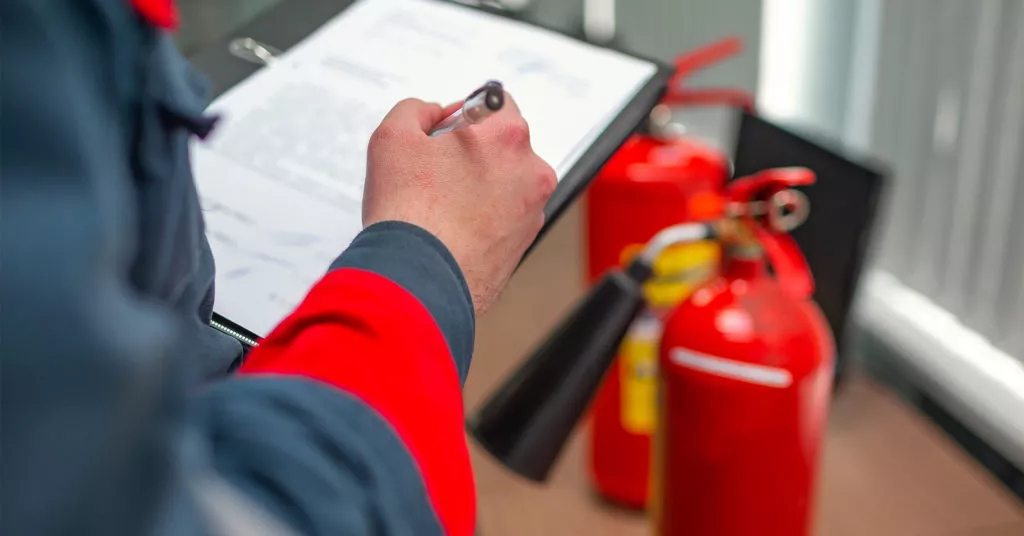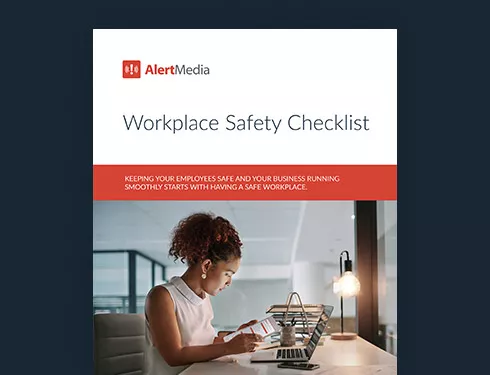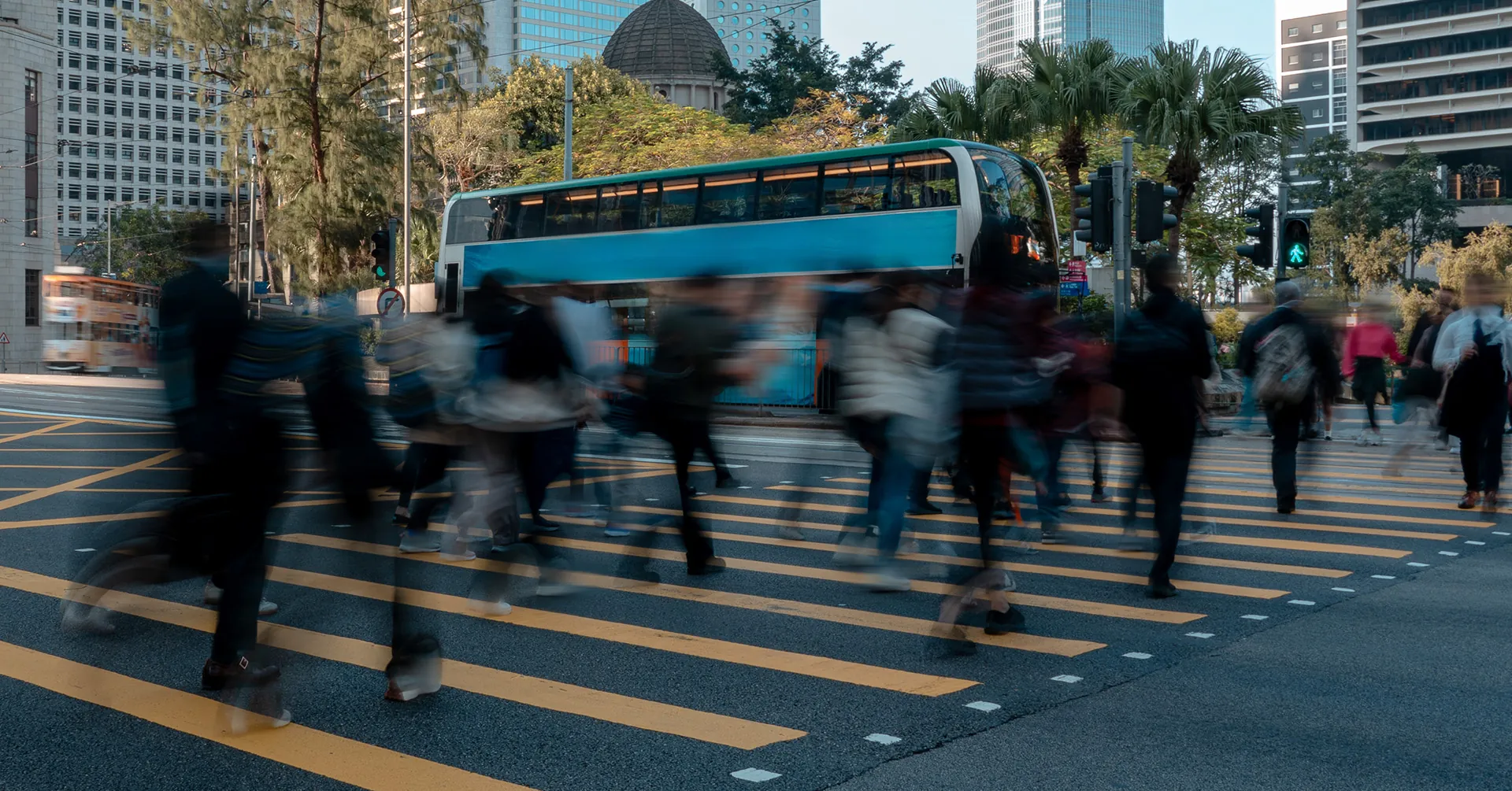
12 Workplace Safety Tips for 2025
Get serious about safety to save your business time and money. Here are twelve workplace safety tips that will help you keep your people safe and your business running.

When JetBlue was just building its roots as a small start-up, the company already knew the safety of its employees would be at the core of its future success. “JetBlue is built on a foundation of kindness and compassion. We want to do well by our customers, our crewmembers, and the communities we serve,” explains Penny Neferis, Director of Business Continuity and Emergency Response and one of the first three team members on staff.
Now that the company has grown to more than 1,000 daily flights and over 24,000 employees, ensuring workplace safety has gotten a little more complicated—but no less important. “We have planes in the air at all times across over 30 different countries,” she says. “Critical events happen every day in the aviation industry. Whether there’s an aircraft with a mechanical issue that requires maintenance, a winter storm that grounds our planes, or a medical situation that requires an emergency landing, we always need to be prepared.”
JetBlue uses threat intelligence to stay aware of any and all emerging disruptions across the globe, ensuring the safety of their crew, passengers, and property. Just as it is for JetBlue, it’s vital that you give workplace safety careful consideration at every turn. Fortunately, creating a safe workplace doesn’t have to be complicated. Here are twelve work safety tips you can kick off now to keep your people safe and your business running normally, even in the face of workplace hazards.
Download Our Workplace Safety Checklist
12 Safety Tips for Work
1. Communicate the Importance of Safety Culture
Workplace safety is a job that’s never done, and it’s not just the responsibility of your environment, health, and safety (EHS) team alone. Rather, your organization should strive to build a culture of workplace safety for which everyone is accountable.

Safety culture is a foundational set of beliefs and behaviors that a company upholds about workplace safety. When a company prioritizes safety above all else, you might say they have a strong and positive safety culture. A workplace safety culture requires buy-in from everyone at your company, from the newest hire up to the CEO and board members. When safety is ingrained in your company culture, all your employees are going to see it as a standard, not a formality.
A strong culture of workplace safety means your employees are empowered to point out safety hazards and report unsafe conditions, and they are far more productive in their daily duties thanks to increased confidence in their peers and processes.
Jeffrey Trask, the Enterprise Emergency and Insurance Risk Manager at ISO New England, explained in an episode of The Employee Safety Podcast that safety culture boils down to explaining the “why” behind safety procedures to everyone. This can be tough amid day-to-day responsibilities, but the best safety managers make sure everyone builds emergency response skills so that in an emergency, they can respond quickly to save life and limb and keep operations running.
2. Encourage Situational Awareness
If you don’t know what’s happening, you can’t respond to a situation. It’s impossible to avoid 100% of workplace safety incidents, but you can give your people the tools and skills to mitigate risks and respond to them in order to prevent serious injury.
Most importantly, you should encourage your team to constantly take stock of their environment and flag anything that seems wrong or unsafe in their work area. This kind of active awareness is often crystallized in the catchy line, “see something, say something.” By offering situational awareness training and enlisting everyone at your company to point out anything fishy, you drastically reduce the chance of accidents or hazards growing out of control.
3. Host Regular Safety Training
Workplace hazards won’t strike at a convenient time, so you need to be ready before they occur. Workplace safety is a skill set that must be honed over time, and a foundational part of this development is standardized training for employees.
Chris Marciano with Prepare to Act shares both the challenges and inherent value of safety and emergency response training:
“What I find is that most businesses don’t even want to think about preparing for something bad to happen until it happens. Start with the buy-in from the top—those decision-makers that run the company need to find the value and importance of training and making their people aware of just what to do in an emergency.”
— Chris Marciano, CEO & Founder of Prepare to Act
Proper training can cover topics such as hazard awareness and response, and it shouldn’t be delivered solely as a lecture or document. Instead, OSHA recommends incorporating hands-on learning techniques so workers can become familiar with whatever might be required of them during a workplace accident.
A great way to conduct engaging, interactive training is through tabletop exercises. The tabletop approach to training presents realistic emergency scenarios but in a safe and low-stress environment. The best teachers for this kind of training are often the workers tasked with handling real-life crises, so be sure to give them a prominent role in the exercise. Combining activity-based learning with peer-to-peer instruction is particularly effective because workers learn from each other, and those who have already experienced emergencies can share their experiences.
As important as workplace safety is to keep front and center in your operations, it’s also good to look at how far we have come. Since President Richard Nixon signed the Occupational Safety and Health Act of 1970 and created the Occupational Safety and Health Administration (OSHA), the rate of workplace injuries, illnesses, and fatalities has decreased dramatically.
According to the Bureau of Labor Statistics, rates of injuries and illness in the workplace went from 11 cases per 100 workers in 1973, to 2.7 cases in 2022. In America and other industrialized countries, it’s never been safer to work. The increased safety we enjoy today is the result of hard work over decades by advocates, labor organizations, and companies themselves, and there’s still more work to be done.

4. Run Emergency Drills
Once you have training established and every employee knows what to do during an accident or dangerous incident, you can run drills to commit those training procedures to muscle memory. Drills also give your employees an idea of what their response would feel like in action—clearer than the sense they’ll get from sitting through training or watching a video.
These drills can range from fire drills, so employees know how to access emergency exits, to drills where they practice their response to a safety accident like a slip or fall. Be sure to introduce unexpected complications into some of your drills so your team has a chance to practice adapting and responding with contingency plans.
5. Provide Proper Safety Equipment and PPE
Personal protective equipment, also known as PPE, is equipment that minimizes the risk of injury or accident to a worker. PPE can include construction site safety gear, such as gloves, hard hats, eye and hearing protection, face masks, and harnesses—but it can also include equipment that protects from less conspicuous hazards. Over the past few years, we’ve all become acquainted with medical PPE (i.e., face masks). But keep in mind that personal protective equipment is anything your workers need to stay safe on the job, whether the hazards are dangerous chemicals, extreme heat conditions, heights, or electrical threats.
Make sure everyone has equipment that is in good working order and fits them. If they are missing any particular piece of gear, provide them with an easy and fast way to request and receive replacement safety equipment.
6. Keep Facility and Equipment in Good Condition
When a large group of people collaborates in the same space, uses the same equipment, and walks the same floors, working conditions can deteriorate quickly. Everything from heavy machinery and forklifts to the break room coffee maker must be maintained and kept in a safe and sanitary condition, according to OSHA requirements. These regular safety measures help you prevent slips and falls due to wet or dirty floors, avoid accidents from poorly maintained tools and machines, and keep your people safe and healthy overall.
You also want to keep emergency equipment stocked and up to date. Check fire extinguishers, first aid kits, and smoke detectors to ensure they are working properly before they’re needed in the rush of an emergency.

7. Make Safety a Daily Priority
Workplace safety shouldn’t be a box to check once a quarter. Set your employees up for safety success by making it a regular subject. This could mean holding daily safety meetings where you discuss relevant safety topics, or you could find time for safety moments, where you integrate an emphasis on safety into the direct work they are doing. You can also find small ways—like adding workplace safety quotes to bulletin boards—to make sure safety is top of mind all the time.
8. Communicate About Hazards
Despite your best efforts to support a safe working environment, accidents might still occur. That’s why it’s paramount to have a way to communicate with everyone should such an event come to pass. Posted signage like wet floor signs and reminders on the bulletin board can be helpful in this case but is far from sufficient.
A two-way communication tool such as AlertMedia’s mass notification system can help solve this problem. It not only enables your company to broadcast safety alerts to your employees, but it also allows your employees to respond with information or questions of their own, increasing the overall visibility of safety issues among your workers and administrators.
9. Celebrate Safety Over Speed
You can tell the most about a company’s culture by asking one question: What do they celebrate? That is, what does success look like in the company’s eyes? Is it maximizing profits at all costs? Maybe producing a quality product or maintaining your beloved brand? These goals are valuable in their own right, but if you want to improve workplace safety, your team should be encouraged and empowered to celebrate safety as a priority.
For example, if a worker comes to their supervisor with a safety concern, they should under no circumstances be made to feel as if they did the wrong thing. If their supervisor responds with an eye roll and an exasperated call to shut down the factory floor, then employees will be less likely to report incidents and concerns in the future. When leaders demonstrate a preference for shortcuts, employee reticence could mean that preventable accidents do play out, harming employees and halting operations. Instead, make sure safety efforts are celebrated and valued—even incentivized—despite the slowdowns they may cause.
10. Keep Safety Records
Any company with more than a handful of employees knows that recordkeeping is important for sales and staffing purposes, but some forget that the same should apply to safety recordkeeping. The most important things to track are all safety incidents and accidents so you can reflect and learn from them. An after-action report can help your safety team identify what caused the issue and how it can be prevented and mitigated in the future.
There is also value in maintaining a record of all proactive safety initiatives. When you conduct a training session, keep a record of attendance, topics covered, and even questions and feedback. On the most basic level, you need to keep track of who has been trained in what. On a more complex level, these training sessions are two-way streets where participants’ insights and feedback can inform the best, most up-to-date version of your emergency response plans.
11. Prioritize Good Ergonomics
One of the most common workplace-related injuries is musculoskeletal disorders. These health problems can manifest as damage to muscles, nerves, bones, blood vessels, ligaments, and tendons. They are most often found in jobs that require lifting heavy objects or similar repetitive tasks for long periods of time. The answer to these issues is good ergonomics.
Ergonomics is the practice of fitting a job to a person. That is, making sure an individual’s equipment fits their body and their task so they can work comfortably with good posture for a decreased risk of injury. Employers are required to provide workers with a workspace free from hazards, so be sure management supports ergonomic efforts. Most importantly, listen to the workers who operate in these workspaces, and learn from their on-the-job experiences to capitalize on any opportunities to improve the healthy working environment.
12. Prioritize Mental, Psychological, and Physical Health
Employers around the world have found that mental health has become a more prominent challenge ever since the start of the COVID-19 pandemic. As employees experienced greater stress due to world events, workers became acutely aware of feelings of burnout and dissatisfaction. This, in turn, led to a wave of people leaving their jobs that has been dubbed the “Great Resignation.”
Facilitate good mental health and well-being for your employees by finding ways to limit workplace stress and providing ample opportunities for regular breaks throughout the day. Employees who are physically and mentally well are going to be better equipped to handle potential hazards in the workplace, avert disasters, and support ongoing operations.
Supporting Safety
When your employees come to work for you, you must do everything in your power to keep them safe and healthy. This is your duty of care. Not only is it the ethically correct thing to do, but it will also lead to better business outcomes. Integrate these safety ideas for the workplace into your broader safety initiatives to build resilience on every level.



![How to Create an Effective Workplace Safety Policy [+ Free Checklist]](https://www.alertmedia.com/wp-content/uploads/2022/02/Blog-HowTo-WorkplaceSafety-Policy.jpg)

![11 Steps to Creating an Effective Emergency Response Plan [+ Template]](https://www.alertmedia.com/wp-content/uploads/2023/10/Blog-Emergency-Response-Plan.webp)
